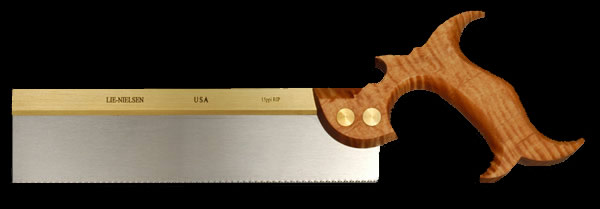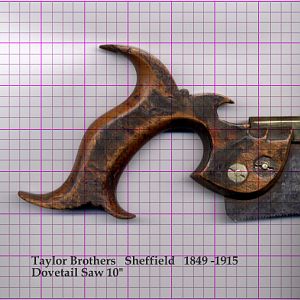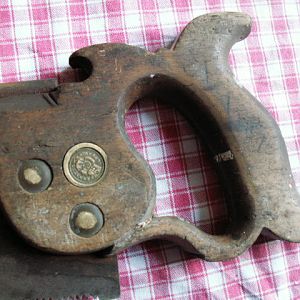Gallery Update
The picture gallery has had an update, the user contributed pictures from the old Coppermine gallery are being imported into the new xenforo media gallery. Lots of interesting saws, and please take the time to vote and add comments where appropriate.
File Cutting and Forging at the Cyclops Works Sheffield 1914-1918
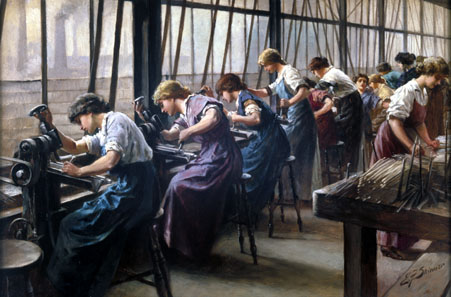
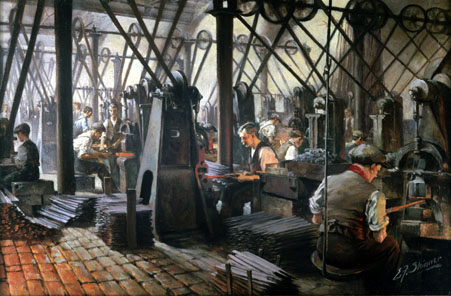
|
These, somewhat idealised images, were produced as a part of a series of postcards for sale, by Cammell Laird, and proceeds went to the Red Cross war effort. I doubt that working conditions were anything like that portrayed, but I like the paintings, it conveys some sense of what it might have been like working in one of the large saw makers's factories around the early part of the 20th Century. Just about every large saw maker also made files. They used some of the files produced in their own saw manufacturing, after which used files were re-introduced into the steel making processes. File Cutting at the Cyclops Works Sheffield 1914-1918 by EF Skinner |
British Saws & Saw Makers from c1660
Downloadable updates to the printed version is available here http://www.backsaw.net/BSSM.pdf ( take care it's 583 Mb )
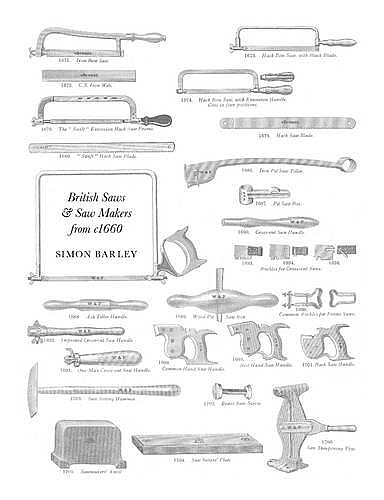
Regular visitors to the site will be already aware of Simon Barley's long anticipated new book on British Saws and Saw makers from 1660. The standard reference for many years has been Handsaw Makers of Britain, by Erwin L Schaffer and Don McConnell, abbreviated as HSMOB. British Saws and Saw Makers (abbreviated as BSSM), will rapidly become the new standard reference work. It's not easy for someone new to the somewhat arcane world of researching British saw makers to really appreciate fully the amount of work that goes into creating such a reference work. The many thousands of hours of painstaking trawling through trade directories and publications of the time. Organizing thousands of details into a coherent whole.
Regular updates on the book with reviews, additions, errata and revisions will be available on here as the need arises. Feedback and questions for Simon may be posted in the forum as usual.
Our congratulations go to Simon Barley for a truly outstanding contribution to research on British saws and sawmakers. I commend the book to anyone interested in the history of toolmaking.
The details of how to purchase the book can be found on the TATHS web site http://www.taths.org.uk/barley-saws.htm
How to purchase link if the above fails
Historians of the various tool trades have long wanted a work specifically on saws and this, the first, is an attempt to match the detail and scholarship of the best that cover planes, cutlery, spanners and measuring tools. The author is a frequent writer and lecturer on saws and the history of their manufacture, and is able to base his work on 15 years of original research and the building of a personal collection of saws - possibly the largest in the world - which is housed with the renowned Ken Hawley Collection in Sheffield's Kelham Island Industrial Museum. Together, these collections form a unique research base and visitor attraction. This scholarly book is illustrated with almost 2000 photographs, the majority by the author, and with its listings of saw makers and dealers forms the most comprehensive directory to date of British names in the tool trades.
British Saws & Saw Makers from c1660 has already gained a reputation for being the "go to" reference for British Saws. Highly recommended
Copyright
None of the original material presented here is subject to copyright, you may use freely, provided that you attribute the source. (can you say plaugerism). Other copyrighted material presented here will be attributed to the source, and where I can I will contact the copyright holder to seek permission. If you find anything here which you believe is infringing on your copyright, let me know and it will be removed.
Copyright is a very confused and difficult area, most of the issues revolve around questions relating to "fair use", in this respect, this site seeks to follow "best practice" as far as it is known to me. Main points are, this is a non-profit site, with educational bias, most of the information presented here is of a factual nature (except my opinions), and I will honour any requests to remove any material that is brought to my attention that is infringing on someone else's copyright.
Contributed Images
Images contributed to the gallery, remain the property of those who uploaded them. I assert no rights whatsoever in respect of those images, and if you wish to use them, you should talk to the owner, not me. (oh wait, I retain the right to remove any thing I deem to be inapropriate, power tools etc)
Who pays the bills?
This site is run as a, not-for-profit exercise on my own behalf, you won't see any advertising here, donations are neither sought nor accepted.
I am semi-retired and I have a lifelong interest in woodworking, lately I have gotten interested in 19th Century British Saws. Hopefully this site will be of some small benefit to others.
|
Welcome to the official site for supporting documentation relating to the book British Saws and Sawmakers from 1660 by Simon Barley. I will be posting here any reviews, additions, errata and revisions as well as providing a forum for ongoing discussion. Regular visitors to the site will be already aware of Simon Barley's long anticipated new book on British Saws and Saw makers from 1660. The standard reference for many years has been Handsaw Makers of Britain, by Erwin L Schaffer and Don McConnell, abbreviated as HSMOB. British Saws and Saw Makers (abbreviated as BSSM), will rapidly become the new standard reference work. It's not easy for someone new to the somewhat arcane world of researching British saw makers to really appreciate fully the amount of work that goes into creating such a reference work. The many thousands of hours of painstaking trawling through trade directories and publications of the time. Organizing thousands of details into a coherent whole. Our congratulations go to Simon Barley for a truly outstanding contribution to research on British saws and sawmakers. I commend the book to anyone interested in the history of toolmaking.
Regular updates on the book with reviews, additions, errata and revisions will be available on here as the need arises. Feedback and questions for Simon may be posted in the forum as usual. The details of how to purchase the book can be found on the TATHS web site http://www.taths.org.uk/barley-saws.htm
Historians of the various tool trades have long wanted a work specifically on saws and this, the first, is an attempt to match the detail and scholarship of the best that cover planes, cutlery, spanners and measuring tools. The author is a frequent writer and lecturer on saws and the history of their manufacture, and is able to base his work on 15 years of original research and the building of a personal collection of saws - possibly the largest in the world - which is housed with the renowned Ken Hawley Collection in Sheffield's Kelham Island Industrial Museum. Together, these collections form a unique research base and visitor attraction. This scholarly book is illustrated with almost 2000 photographs, the majority by the author, and with its listings of saw makers and dealers forms the most comprehensive directory to date of British names in the tool trades.
Errata.( In page order ) Page 28, col 1: 9 lines from bottom, for Old Street, read London Page 43, col 2, 3rd para: for Figure 2.4 and Figure 2.5, read Figure 2.8 Page 49, caption to Figure 3.1 should read 1840, not 1820 Page 56, 5 and 6 lines from the end of the second paragraph, change "the distal six inches of two-man cross-cuts..." to one-man cross-cuts". Page 69, In paragraph 4, Figures 3.66 should be 3.62 and 3.67 should be 3.63. In paragraph 5, Figure 3.68 should be 3.64 Page 74, 5th line, for chapter 3, read chapter 5 Page 278, The line of text "Took over premises of J.C.Millard" belongs under the Grainge and Smith entry; on the opposite page. Page 293, line 4 Insert ‘more’ between much and often Page 421, Superfluous "and" in line 1 of the third paragraph. Page 522, The initial S of Sheffield Steel Products should be inserted Page 723, under Manwaring for 39 read 37. |
Evolution of the Backsaw
When did the backsaw first appear? This is a question that at first sight, it would appear to be simple to answer. Not so. I imagined that I would just refer to the available literature for answers. It is a curious and sparsely researched area of Archaeology, plenty of material relating to axes, hammers and so on, going all the way back to the stone age. If you want to know about stone axes, there is an abundance of material. But saws seem to have slipped mostly below the radar. Saws go back to the early Egyptians who had hardened copper pull saws as early as 4900BC, but I am going to focus here on just backsaws. (A complete history of the saw would be a much more ambitious undertaking).
The earliest possible candidate which may have been a backsaw, is a Roman saw found at Mont Auxois, a Gaulish camp, this saw is in the museum at St.-Germain.

W.L.Goodman "A History of Woodworking Tools" pp117
The author suggests that this may have been a backsaw, because of the row of holes along the back of the blade look as if a wooden stiffening rib could have been attached, also it looks as though the handle was attached with rivets, rather than a tanged handle, he also points out that the teeth are progressive in pitch, that is closer at the toe, and wider spaced at the heel. So the earliest backsaw was progessive pitch (this saw is obviously the Lie Nielsen of the Roman world!). Nothing is ever entirely new apparently.
Following the collapse of the Roman Empire, the handsaw seems to pretty much dissapear from history, the Bayeaux Tapestries which illustrate the process of ship building from felling trees to launching the ships shows not a single saw. All work is done with axes, adzes and other tools.
I suspect that the handsaw was still in there somewhere, hiding, in the medieval toolbox, maybe only dusted off for special jobs that couldn't be handled by the bow-saw or frame-saw. The only evidence I have for this assertion is a 13th Century saw found when excavating a midden near Windcliff.

British Push Saw from 1200's found in a midden at Windcliff "Story of the Saw" P.d'A.Jones and E.N.Simons.
It is interesting not only because of it's age, but it appears to be intended to cut on the push stroke, rather than the pull stroke. However it's not a backsaw, but it is a wide blade. Also it is evidently intended to be fitted with a tanged handle.
Moving forward, our next clue, is found in H.C. Mercer's "Ancient Carpenters Tools" pp139 where he says that the tenon saw is first mentioned in the 1549 edition of the "New English Dictionary" and is so thin that it is stiffened with a metal rib. He may have been referring to a saw that is mounted in a metal frame, rather than our moden concept of a backsaw (see MissingLink1) (Thanks to Brian Welch for this insight). The only hand saw images of this time generally depict a sword like two handed saw, with a long thin serrated blade, sometimes curved. The bow saw, frame saw and the pit saw also appear frequently. throughout the medieval period.
The next mention of backsaws appears in J Moxon's 1680's "Mechanick Exercises or The Doctrine of Handy Works" unfortunately he doesn't illustrate the backsaw and his reference appears out of context. As many others have noted, it's a pity Moxon's proof reader missed the oversight. He only shows two saws, one looks more like a serrated long knife, and this one. (actually the page (plate 4) shows 6 saws, including whip-saw, pit-saw, frame-saw and one being sharpened.) Only two candidates for our concept of a back saw however.
A re-reading of the relevant chapters of Moxon, it appears that he was referring to a bow saw with the blade turned at right angles, although why that should make it a "tennant" saw is still unclear. What is clear is that Moxon's proof reader didn't make a mistake, it was just mis-interpreted.
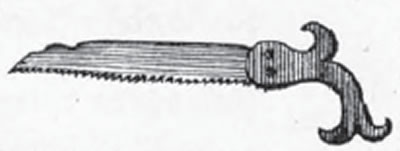
Moxon 1680's "Mechanick Exercises or The Doctrine of Handy Works"
This looks more like a pruning saw, rather than the saw's we are familiar with today. The hand position is actually below the line of the teeth. We now move into the 1700's and still no sign of a backsaw anywhere, but everyone seems to know about them.
The 1736 publication "City and County Purchaser's and Builder's Dictionary" published by Richard Neve mentions the tenon saw or tenant saw as "used for fine stuff, with a back to it; so called from being used to make tenons for Mortises".
If we take an overview of the period from 1400 to 1800 we can get a sense of the the evolution taking place.
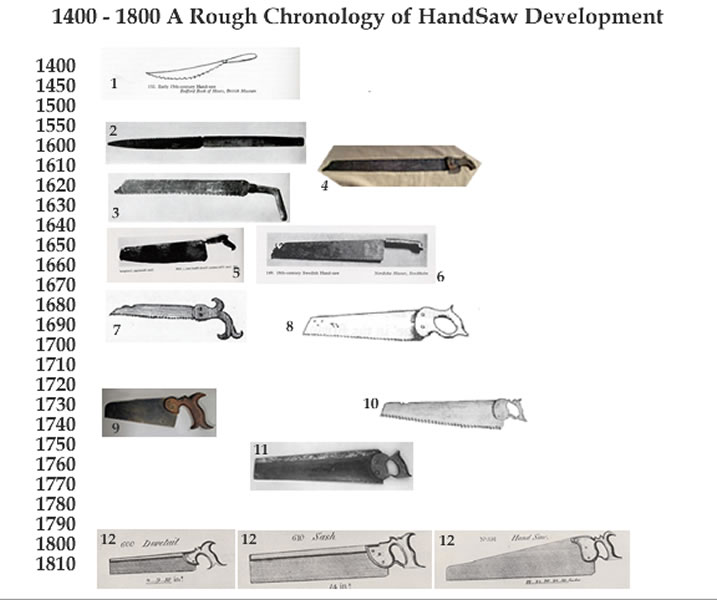
References:-
1.2.3.5.6. Goodman, W.L. "The History of Woodworking Tools" pp 126,pp146.
4 Courtesy Tony Seo (estimated to be circa 1600).
7. Moxon, J . "Mechanick Exercises" London 1683 (Courtesy Mike Wenzloff).
8. Ralamb, A.C. "Skeps Byggerij" [Ship Building] c1691 (Courtesy Don McConnell).
9. Davistown Museum http://www.davistownmuseum.org/toolSaws.html c1750.
10. Trade card of John Jennion London 1732-1757 (Courtesy Don McConnell)
11. John (or Alice) White London mid 18th Century (Courtesy Don McConnell).
12. Smith, J. "Explanation or Key to the Various Manufactures of Sheffield" 1816
By the time Smith's Key was published in 1816, all of the handsaws we are familiar with today had evolved to the forms and functions that we use today. However this evolution appears to have mostly taken place over the period 1700-1800, I suspect that this is a misleading impression we get simply because of the lack of surviving examples. We know that something called a tenon-tennon-tennant-tenant saw was around in the mid 16th Century, we just don't know what it looked like. However we can make some educated guesses that it could have looked a bit like the swedish saws illustrated in 5 or 6 above. Probably with a tanged handle, or it may have looked something a bit like our modern hacksaw. Which "Missing Link 1" was Moxon referring to as a "tennant" saw?

Missing Link Number 1 Circa 1550
(Thanks to Brian Welch for the image on the right: Randle Holme 1688)
We can guess that the change to a rivetted handle possibly occurred around the mid 1600's when commercial saw production began. Changing to rivetting the handle to the blade would have enabled the development of the closed handle. Putting a closed handle on a tanged blade doesn't seem practical . Also the hand position is now clearly above the tooth line. This "Missing Link Number 2" is what I imagine an early 1700's dovetail saw to look like. As yet it hasn't been found. (it might not exist)
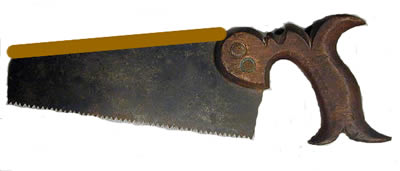
Missing Link Number 2 Circa 1700
This example below is from 1750, but the A.C. Ralamb saw pictured in (8) above (1698 or earlier) is very similar to this from, just add a piece of folded steel to the back to the A.C.Ralamb saw and you have the J.Harrison of the 1750's

J Harrison 1750-1770
This J. Harrison and the J. White (11 above) are both steel backed, it appears that larger (early) backed handsaws were generally steel backed and the smaller ones brass backed, the Peter Nicholson writing in the 1832 "Mechanics Companion" , says that the tenon saw has a steel back, and the smaller sash saw has a brass back. I suspect this may have been for cost reasons or perhaps production tooling limitations. Either way the large early backsaws seem to have steel backs rather than brass.
When saw production began in Sheffield, the improved steel production processes led to thinner plate, better quality steel and competition between the various saw makers would have created an environment where improvements in manufacturing technique would have spread rapidly. From 1800 onwards we have many more manufacturers and many more surviving saws to compare. The Sheffield saw industry was well placed to take saw manufacturing to the high art that developed in the years from 1800-1900.
So, when did the first backsaw appear? (apart from the Romans):
The only hard evidence in the form of real saws however, is from the 1750's but we have a description of a tenon saw from 1736 (Richard Neve), which is perhaps a little less ambiguous than Moxon's 1680 reference.
So my answer is a cautious....sometime before 1736....possibly as early as 1700.
I wouldn't be at all surprised to find out it was 1650 however.
That's called having a bet each-way. Further research may help refine the answer.
Ray Gardiner July 2008
Edit 18/10/2008: Fixed link for Davistown Museum
Edit 01/12/2008: Added reference to Richard Neve 1736
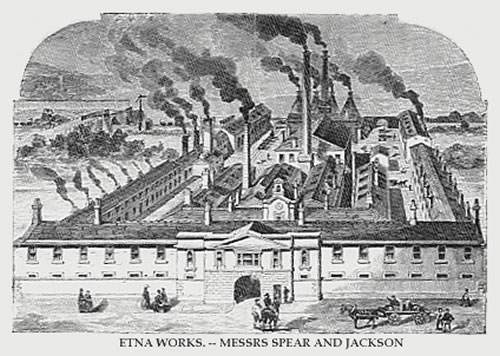
Illustrated Guide to Sheffield 1879
It is assumed that working conditions in industrial England in the 19th Century was dominated by child labour, greedy Simon Legree type bosses and starvation wages, while conditions were nothing like as good as todays industrial workplace, perhaps it is worthwhile to see what it was really like. You might be surprised.
This is an excerpt from "The Vital Statistics of Sheffield" by G Calvert Holland Esq MD Physican Extraordinary to the Sheffield General Hospital from 1843. The book is out of copyright, as far as I can tell. I have re-formatted it slightly for the web page, but the content is unaltered.
CHAPTER XII.
SAW MANUFACTURE.
The workmen in this branch of trade are, perhaps, in no degree inferior in intelligence, sobriety and general good conduct to those in the manufacture of which we have just treated. They have both equally their respective unions, which regulate wages, the introduction of apprentices and which, in time of sickness, afford a weekly allowance. The following answers to the subjoined questions will convey a correct idea of the condition of the artisans.
1. What are the principal branches of the saw-making department?
The saw trade is divided into three branches saw-making, saw-handle making, and saw-grinding.
2. What parts are usually executed by boys or women ?
Boys in the saw-making branch attend first to toothing and filing. Women are employed to rub and scour saws, and, also, to oil and wrap them up.
3. What number of workmen is there in the different branches ?
In the saw-making branch, there are two hundred and eight journeymen,—about twenty of them not in union.
4. What number of boys or apprentices ?
The number of boys is about one hundred and thirty, which exceeds what is allowed by the rules of the trade.
5. What number of women ?
There is one female to about every eight men.
6. Were girls or women much employed in the trade thirty or forty years ago ?
Always as at present.
7. What are the rules regulating the admission of apprentices ?
The master is allowed two apprentices to five journeymen. During the bad time of trade, this regulation has not been strictly attended to by the masters.
8. What is the average of the wages in the different branches, supposing an individual to labour eleven hours per day ?
There is so great a difference in the work, and such diversity of talent in the workmen, that it is scarcely possible to give an average. The following statement is not far from the truth:— The few who are datal earn from 24s. to 82s. per week. The piece-work varies very much in its kind. Some departments will allow a person to earn from 85s. to 45s. per week, whilst others restrict the earnings to between 28s. and 80s.—28s. is about the average of the wages.
9. Are the workmen usually by the piece or *datal?
Both by the piece and datal, but generally by the piece.
* Datal means paid by the day or week—piece, for the amount of work executed.
10. What proportion of the adults can read ?
Nineteen out of twenty.
11. What proportion can write?
Nearly nineteen out of twenty.
12. What proportion of boys can read or write ?
We are not aware that there are any that cannot do both.
13. Are the different branches of the trade in the same or different unions? If in different unions, is each under a separate and independent management
In different unions, and their management is quite independent of each other
14. What changes have taken place in the prices since 1814?
The saw-making branch, for making the best article, receives about the same as in 1814; but there is twenty per cent, more work in the articles than in 1814.
15. What proportion of men are in sick clubs ?
About nine-tenths.
16. What proportion in secret orders ?
About one-sixth.
17. Are the men, in sickness, or when out of work, relieved from any fund belonging to each branch of this trade ?
Workmen belonging to the saw-making branch, in case of sickness, or when out of employment, receive a weekly allowance; and in case of death, a certain sum is paid towards defraying the funeral expenses. During the past two years, this branch has paid about £2000, principally to workmen out of employment It has been in union, and regularly organised above forty years.
18. What proportion of the workmen are depositors in the Savings' Bank?
From the depression of trade, during the last two years, we doubt whether any deposits remain in the Savings' Bank.*
* In 1840, it is shewn, at page 133, that there were 34.
19. Are the prices as strictly enforced, in time of bad trade, as in time of good ?
We have had great difficulty in maintaining the prices, but have generally been successful.
1. What is the number of men employed in this department of trade?
The number of men employed is about 120.
2. What is the number of boys employed, and what are the rules regulating their admission?
The number of boys is about 100, and there is no particular rule regulating their admission.
3. What is the number of females employed ?
Women are not employed in this department of trade.
4. Are the men datal or by the piece ?
The men work always by the piece.
5. What is the average of the weekly wages, and when were the present prices fixed ?
The average earnings, 26s. per week. The prices were fixed in 1821, but many men are working at prices lower than at that time?
6. Are the men in union ?
The men are in union, but one very imperfectly formed and conducted.
7. What proportion of the men can read ?
About eighty.
8. Are the apprentices the property of the masters or the journeymen ?
With few exceptions, they are the property of the journeymen.
1. What is the number of men employed in this department of trade?
The number of men in this department of the saw trade is nearly one hundred and twenty.
2. What is the number of boys employed, and what are the rules regulating their admission ?
The number of apprentices is about 90. No journeyman is allowed to have more than one apprentice, unless the apprentice be in his twentieth year.
3. Are the men datal or by the piece ?
With few exceptions, the men work by the piece.
4. What is the average of the weekly wages?
The average earnings are from 40s. to 50s. per week, out of which sum the grinder pays wheel rent, and the cost of stones and other articles required in grinding.
5 Are the men in union ?
The men, with the exception of about 12, are in a union which was formed in 1819.
6. What proportion of the men can read ?
About one hundred.
In the consideration of the silver and silver-plated manufacture, several conditions are stated which appear to be favourable to the workmen—such as restrictions on the introduction of apprentices, and the difficulty, from the capital required, for journeymen to become masters. The same exist, but not to an equal extent, in the saw trade. This is more liable to fluctuations from the greater competition resulting from this circumstance, and likewise from the manufacture depending largely on foreign markets. The well-being and intelligence of workmen will always be most marked in those branches in which the demand is the most regular. Neither inordinate prosperity nor adversity is conducive to the improvement of the artisan.
Many of the facts in the foregoing answers redound greatly to the credit of the operatives. Not to be able to read and write, is the exception and not the rule. It is also stated, that nine-tenths are in sick-clubs, which is perhaps a greater proportion, with the exception of the silver-plated branch, than in any other in the town. In some of the occupations, the proportion is little more than one-half. Men who are insufficiently remunerated for their labour, yet liable to the frequent vicissitudes of trade, cannot be expected to be provident, nor have they generally' either the means or the inclination to improve their minds.
The researches of Mr. Felkin into the condition of the workmen in Nottingham, during the depression of trade in 1837, afford some valuable facts on this subject, and are evidence of the vastly superior circumstances of the artisans employed in the manufactures of this town.
Out of 452 stocking makers, 91 only were in sick clubs; about one in five. In 498 lace makers, 128; rather more than one in four. Of the smiths, one in five. How different are these proportions from what are furnished by the saw trade ! Were there no other facts, on which to form an estimate of the condition of the artisans in the latter, these would be sufficient to establish the comparative comfort of the one class, and the comparative misery and degradation of the other.
The saw-making branch may be regarded as generally healthy. It is an occupation in which considerable muscular exertion is required, and yet the labour is not so severe as to make an undue call upon the energies of the system. The men art mostly well formed and strong, and live to a fair average age, taking into consideration that the employment is entirely within doors. The saw-grinders are among the most powerful of the artisans, either in this or any other manufacturing town. A great part of the labour is heavy, but several circumstances concur to prevent this exhausting the vital powers. The wheels in which they work are mostly propelled by water, being placed upon the streams, in the exquisitely beautiful situations within a few miles of the town; consequently, the artisans are liable to numerous interruptions, either from too much or too little water. The frequency of these interruptions has led many of them, to add to this employment the cultivation of the soil.
They have frequently either small farms, or plots of ground for garden purposes. The wheels, moreover, are always well ventilated, in consequence of dilapidated windows and roofs, for they are proverbially in a bad condition. The workmen, also, generally live in the country, and the wages they receive, which is an important circumstance, enable them to command the substantial necessaries of life. The combination of these conditions, satisfactorily explains the strong muscular frames which they possess. Further, the branch does not admit of the employment of boys at a tender age or of delicate constitution, the articles being too heavy for either to hold with advantage. Saw grinding is also entirely done on a wet stone, and the position of the grinder, when at work, is standing, so that the lungs have free play, which is not the case in other branches of grinding.
The saw grinders are peculiarly liable to accidents, from the breaking of stones and from becoming entangled in the machinery. This arises from two circumstances, the largeness of the stones on which they work, as well as the great length and weight of many of the articles which they grind. The larger the stones, combined with the rate of motion, and the more liable they are to break; and it is manifest that a saw, five or six feet in length, is much less under the command of the grinder than a penknife; hence greater the chance of becoming entangled in the machinery. Of the 42 deceased, since 1821, of which we have returns, five were killed by the breaking of stones; and the following are a part of the accidents which have happened to 78 living members in union.
1. Lame nine months, from the breaking of a stone.
2. Lame six months;—drawn over the stone.
3. Arm broken, from being entangled in the machinery.
4. Skull severely fractured;—was incapable of work for nine months, and the individual has broken eleven stones.
5. Drawn over the stone;—severely hurt;—in bed nine months.
6. Severely hurt—confined two months;—has broken seven stones.
7. Hand cut;—confined one month.
8. Leg entangled in the machinery;—for twelve months unable to work.
9. Arm severely lacerated;—lame three months.
10. Lamed, from the stone breaking;—ill three months.
11. Hand lacerated;—incapacitated from work.
12. Hand lacerated;—lame two months.
13 Leg broken, and now a cripple.
In this branch, there are only four affected with the disease peculiar to grinders, and these cases are more likely to have arisen from exposure to wet and cold, than from the inhalation.
Canted Blades (tapered in width)
You can taper the thickness, or you can taper the width, here I am talking about tapered width. Thickness is another matter altogether. You will often see old saws where the blade is decidedly narrower at the toe than the heel. Here is an idea of what I am talking about.
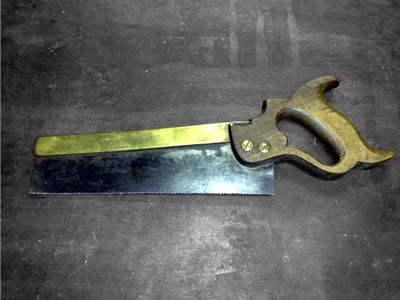
Spear and Jackson Dovetail Saw, showing canted blade
Notice the rather steep angle between the back and the cutting line, some have theorized that this cant has been created by incorrect jointing over many years, some say the back has just slipped and need to bash the brass back down into line. (I have heard stories of tool dealers bashing away at saws to make the blade parallel to the back.) Both theories have some merit, and could cause the same cant (taper). The purpose of this article is to investigate what could cause the canting and why. But before we start, it is a good idea to do some homework and bring everyone up to speed on the state of the discussion.
Joining in the Discussion
For those who are coming late to the party, here is a quick catch-up.
Recently there have been a few articles written on this subject, the first is by Phillip Baker writing in the "Saw Talk" column over at wkfinetools.com http://www.wkfinetools.com/contrib/pBaker/parallelTaper/parallelTaper-1.asp
He concludes, (correctly in my view), that some saws are made with cant (taper), and some made with no canting, but get that way over time.
Chris Schwartz writing in his (always informative) blog over at woodworking-magazine, discusses why having a canted (tapered blade) helps cutting dovetails.
http://www.woodworking-magazine.com/blog/Tapered+Sawblades+Thats+Not+A+Defect+Its+A+Feature.aspx
He also points out that "Smith's Key" a pattern book published in 1816, clearly shows canted (tapered) blades. Thus proving that at least some saws were made with a canted blade.
An alternate view of why smaller saws tend to be more canted is illustrated here:- http://www.disstonianinstitute.com/dovesharp.html
Here Eric Von Sneidern, argues that the canting is induced over time, and repeated jointings because of the difficulty of clamping small saws in a standard saw vise. I am sure that this is a factor, at least in some saws. and should not be discounted.
The next contribution to the discussion, comes courtesy Spear and Jackson's 1915 catalogue.

It looks as though my 2 screw Spear and Jackson must be earlier than 1915, I wonder if they can give me an upgrade?
Late Additions:-
The Norse Woodsmith has written a blog on canted blades, you can read it here: http://www.norsewoodsmith.com/blog/1
Now that we are all up to speed on the current state of the discussion, let's take a closer look at that saw we showed above, we will start by dissassembling it, I am going to restore it (eventually) as best I can.
First we look to see if the back has slipped up, and lo and behold, it's about 3/8: higher than the depth of the slot on the handle would indicate.
Looks like Spear and Jackson's 1915 sales pitch was at least partially correct.
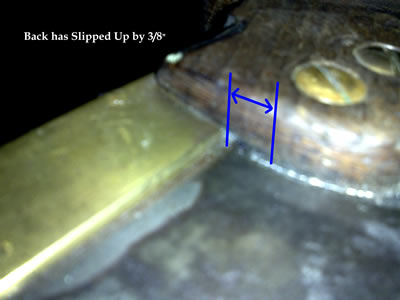
It looks pretty grungy, and there is a lot of gunk filling the gap, but the brass back has clearly lifted by 3/8. So let's move on and take the back off.
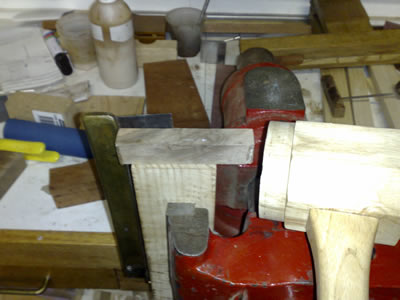
To remove the brass back, clamp the blade between two blocks of scrap and and then using a block of wood and a mallet, GENTLY tap the brass back
Most of them are not actually that tight as a rule, and come off easily.
Now let's see what we have.
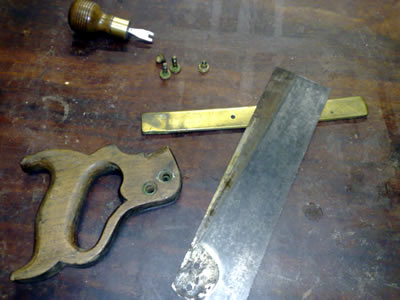
Dissassembled
First off notice that the blade isn't actually tapered at all. It is rectangular. The canting is just an illusion created by the way the blade is assembled into the brass back. and the correct degree of cant is about 1 inch. Ok, so three things we can conclude so far.
1. The brass back had slipped up slightly, increasing the canting.
2. The saw was made with a deliberate cant, that cant being created by inserting the blade at an angle to the back.
3. Repeated sharpenings have not induced any additional canting. (the blade would not be rectangular if it did).
So let's look back a little in time, to see where the canting originated and why it is there. Following Chris Schwartz's lead let's have another look at Smith's Key.
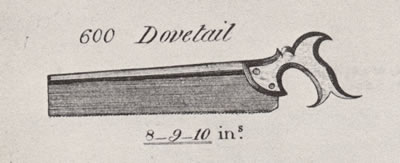
Joseph Smith "Explanation or Key to the Various Manufactories of Sheffield" 1816
Clearly, this is how dovetail saws were intended to be made in 1816, what is not clear is when did the change to parallel backs occurr, If we look at the
1889 illustrated Trade List of Prices for Sheffield Goods. We see the following.
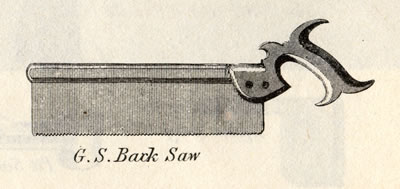
Illustrated Trade List of Prices of Sheffield Goods 1889
Again, this illustration is intended to show what a dovetail saw should look like.
So sometime between 1816 and 1889 the "standard" changed from canted (tapered) to parallel, no wonder people get confused!. The question as to why it changed I suspect has more to do with the manufacturing processes than with the usability of the saw. Again I should caution against generalizations, this only illustrates part of the picture. We haven't attempted yet to deal with why a canted (tapered) blade would be a desirable feature.
What caused the canting (taper) on my saw?
So If you have a saw with a canted (tapered) blade, is it an artifact caused by repeated incorrect jointing during sharpening?
Well, yes it could be.
The only way to know is to remove the back and see if the blade is rectangular or not. I suspect if you have a post 1900's saw with only a slight cant (taper), say less than 1/4" I would expect that could be caused by incorrect jointing over repeated sharpenings.
On the other hand if you have an 1850's saw with say 1/2" or more of canting and the back is firmly seated in the handle, it probably was made that way.
It may be that earlier saws actually had canted (tapered) blades and the practice of putting the blade in the back at an angle came along later, I would be curious to find out.
What would the advantage of having a canted blade be?
Let's go back to basics and see what the "correct" technique is for ripping a board with a standard panel saw. Notice the angle between the line of the teeth and the board. The starting cut is at a very shallow angle, then moves to a more upright angle.
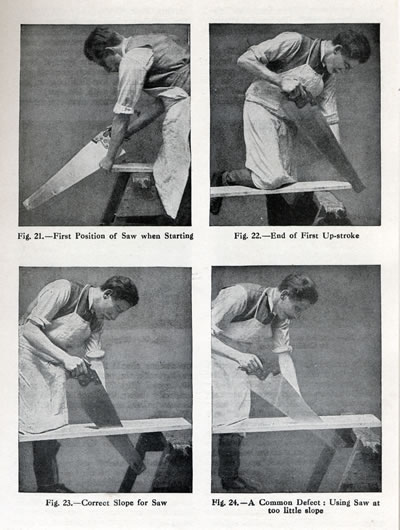
Using a Rip Saw, "The Practical Woodworker" Bernard E Jones pp 50 Vol 1
"The Art and Practice of Woodworking"
Imagine if you will what happens when the board is vertical, as it usually is when cutting dovetails or tenons, what is the correct angle for sawing?
the angle of the line of teeth will be tilted towards the handle, it is more comfortable to get closer to this angle with a tapered blade. But now we are
at an angle to our desired finish cut, so when we hit the line at the front, simply tilt up slightly for the final strokes.
Why is this angle important (if indeed it is?) well, consider what a rip tooth with zero rake looks like, now imagine that chisel like cutting edge cutting accross a bundle of wood fibres, it is easier to slice at an angle rather than straight down. Cutting at an angle tends to lift the fibres in front of the edge and makes for a cleaner cut with less effort. (I really need to do a drawing to illustrate this..)
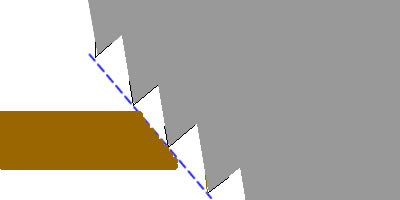
Ripping at an angle (exaggerated)
Here I am trying to illustrate that when you are ripping, the teeth are cutting the bundles of wood fibres at an angle, (imagine a bundle of straws if that helps), now as you cut through this bundle, if you are cutting at a slight angle, then the fibres will tend to lift up in front of the tooth and thus make for an easier and cleaner cut. If you are chopping down at right angles to the fibres, then they won't lift and the excercise becomes a bit like scraping end-grain. I think the above illustration also show there must be some correlation between the cutting line and the rake angle of the teeth.
Something for future study...
Conclusions
So blades are canted because it makes sawing at an angle to the board more comfortable, also makes sawing to a line easier.
There are many reasons why backsaws blades appear canted. From repeated incorrect jointing, back slippage and of course "made that way"
Have a close look at that vintage backsaw with the canted blade and see if you can tell which is true for you.
Addtional Note: I should of course mention that Gramercy backsaws and Mike Wenzloff's Saws are sold with canted blades.
Following a suggestion from Joel Moskowitz (Tools for Working Wood) I have adopted the term "canted/cant" when referring to tapering blade width. Joel informs me that, Tim Corbett - Gramercy Tools originated the term. Thanks Tim, it's the ideal word.
I am not aware of any nomenclature that already covers this, and using "canted" instead of "tapered", removes some confusion from a subject already fraught with more than enough confusion already. Plus, "canted", is a very descriptive and accurate term for this subject.
Ray Gardiner 2008
Edit: RG 4th August 2008: Changed tapered to canted in main text where relevant.
Edit: RG 30th August 2008:Fixing typo's and some spelling. Some instances where tapered / canted were missed.
Edit RG 18th September 2008: Added Link to Leif's Blog.
Trade Marks are an important in the unambiguous identification of a particular maker. With backsaws especially, the trade mark is usually stamped on the back of the saw and so provides a permanent method of identification.
This list of trade marks is taken from Kellys 1901 trade directory. I will add others here are they become available.
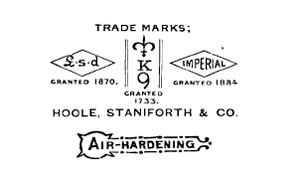
Allen Edgar & Co. Limited, Imperial steel works Tinsley.
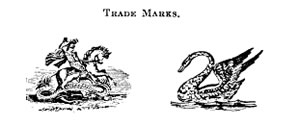
Brittain S. S. & Co St George's Works Shoreham Street
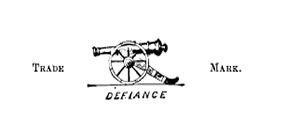
Brooksbank Abram & Co. Malinda Street
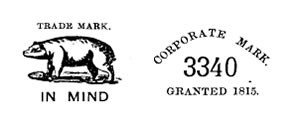
Atkinson Brothers Limited, Milton Works,
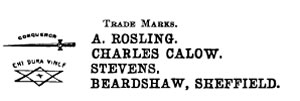
Beardshaw J. & Son, Ltd Baltic steel works, Effingham road,
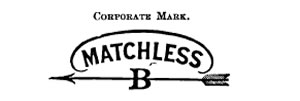
Beckett Alfred & Sons, Ltd, Brooklyn works, Green Lane,

Bedford John & Sons Limited Lion works, Mowbray street,
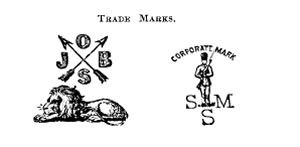
Burys & Co. Lim. Regent Works, Penistone road & Philadelphia works Rutland road.
Other Marks: "WM.ASH & Co.", "REGENT"
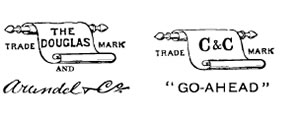
Colquhoun & Cadman, Douglas works, Arundel Street
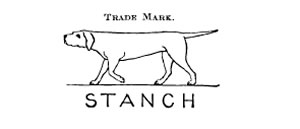
Carr J. & Riley, Bailey Lane works,
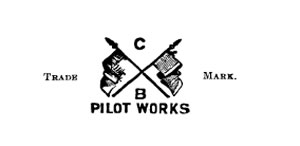
Colver Bros. Lim. Pilot works, Cotton Mill row
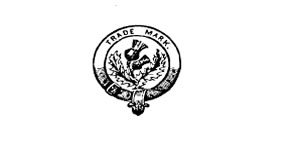
Cook Williams & Sons, Glasgow Steel and File Works Washford road, Attercliffe; and Glasgow and London,
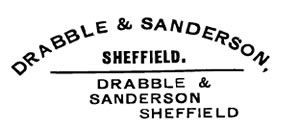
Drabble & Sanderson, Ebenezer Works, Morpeth St.
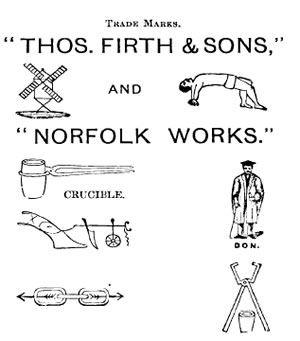
Firth Thos. & Sons, Ld. Norfolk Works, Savile street east,
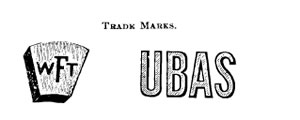
Flather W. T. Limited, Standard steel works, Love street.
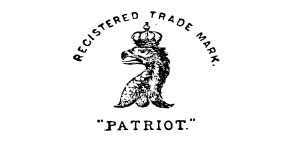
Glauert L. & C. Wallace works, Furnival Street,
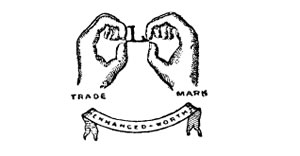
Hansell F. L. & Co The Hansell Canal Steel and Wheel works, 47 Eyre Lane,
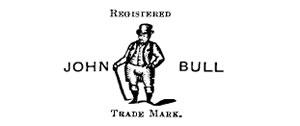
Hearnshaw Brothers 50-52 Sorby Street,
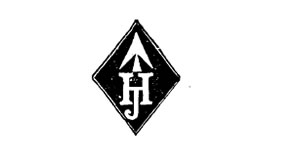
Howarth James & Sons, Bath Street

Ibbotson Brothers & Co Lim. Globe Steel works, Alma St; and 7 Victoria Street, Westminister, London, s.w

Jackson William & Co Sheaf Island works Pond hill,

John Wilson, Marsden Bros. & Co. Portland works, Trafalgar street
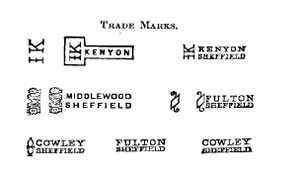
Kenyon John & Co. Mill Sands steel works, Mill Sands,
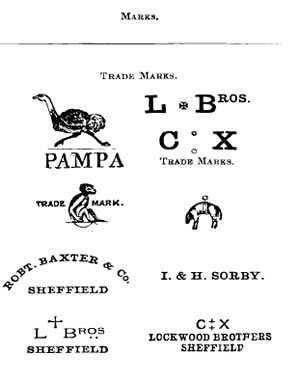
Lockwood Bros. Limited, Spital Hill works, Spital hill.

Makin Thomas & Son, Castle works 105 Edward street,
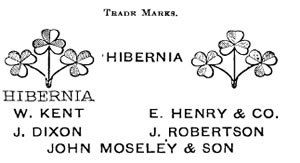
Marples William & Sons Limited, Hibernia Works, Westfield terrace.
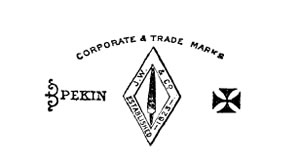
Marsden & Beeten, Middlesex works, Newcastle st.
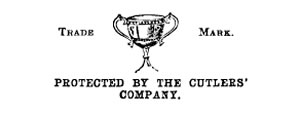
Moss & Gamble Bros. Franklin works, Russell street; & Wadsley Bridge works, Wadsley Bridge,
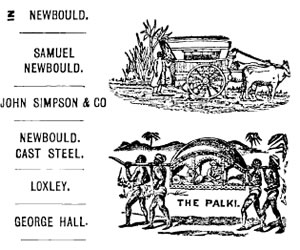
Newbould Samuel & Co. Lim. Newhall road,
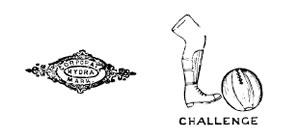
Osbaldiston Louis & Co. Challenge works, Arundel street,
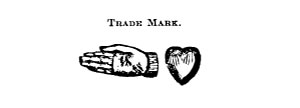
Osborn Samuel & Co. Clyde steel and iron works, Wicker; 184 Brook hill, Blonk street and Rutland works, Penistone road; and London,

Peace Joseph & Co. Lim. Lancaster street,
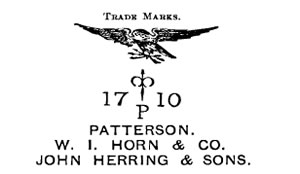
Peace W. K & C. Limited, Eagle works, Mowbray street; London offices 61 St. Mary Axe, E C.

Pearson F. G. & Co. Hope Works, Furnace hill.
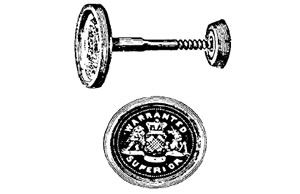
Warranted Superior
Priest & Co. Pea Croft brass works, 60 Solly street.
While not strictly a saw maker, this medallion appears on many secondary product lines.
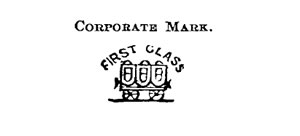
Russell, Horsefield & White; Canada works, Charles street,
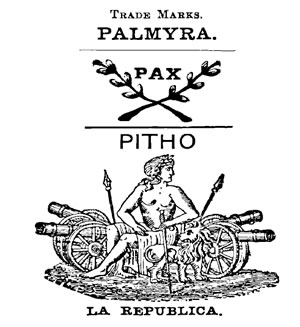
Sanderson Bros. & Co. Lim. Newhall road,
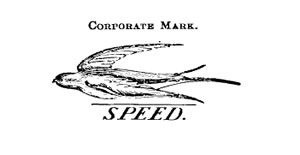
Slack, Sellars & Co. Townhead works, Lancaster street, Neepsend

Sorby I. (now Turner, Naylor & Co Ltd), John street

Sorby Robert & Sons Ltd. Trafalgar street.

Spear and Jackson, Etna works, Saville street east,
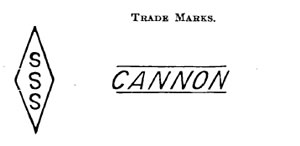
Sybry, Searls & Co. Carlisle street

Taylor Brothers. Adelaide works, Mowbray street.

Turner, Naylor & Co. Ltd. (late I Sorby), Northern tool works, John street.

Turner Thomas & Co. Suffolk works, Suffolk road
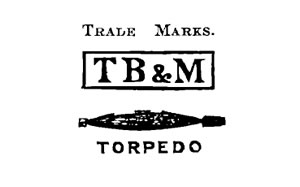
Turton Bros & Matthews Lim. Steel, file & spring works, Wentworth street, Neepsend lane;
and 34 Gracechurch street, London E C, N.T. No 1045 T.A. "Matthews Sheffield"
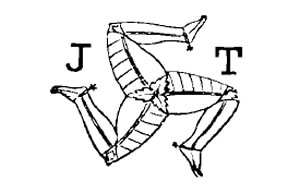
Tyzack Joseph & Son Lim. Meersbrook, Sheffield
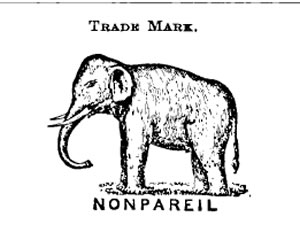
Tyzack, Sons & Turner, Little London works, Heeley
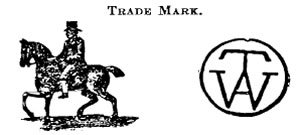
Tyzack W. A. & Co. Stella works, Hereford street
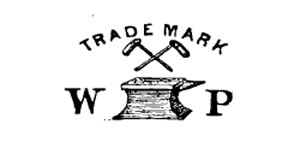
Ward & Payne, Ward's works, West street & Limbrick works, Hillsboro,
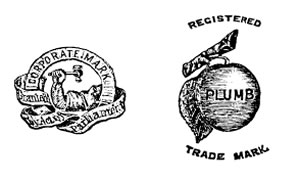
Wheatman & Smith Ltd. Russell works, Kelham Island,
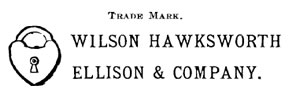
Wilson, Hawksworth, Ellison & Co. (now Kayser, Ellison & Co. Ltd.), Carlisle wrks.
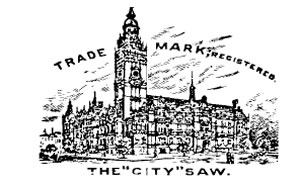
Wilson William F. H. Hermitage lane
Page 1 of 2

